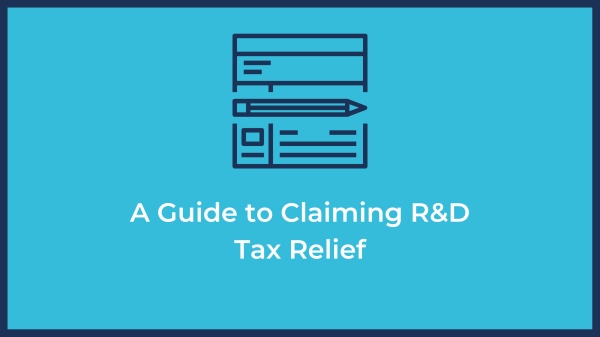A Guide to Claiming R&D Tax Relief
Published: 04/07/2020
Free trial
See for yourself how you can save time and money. Enter your details below for a free 30 day no-obligation trial.

We wrote this guide for business owners and managing directors who believe they may be eligible for R&D tax relief. The guidelines concerning qualifications are quite vague, and many struggle to bring their projects to fruition due to a lack of funding. However, few understand when they qualify for R&D tax relief.
If you’re a company involved in innovative science and technology projects, you are likely eligible to claim corporate tax relief for research and development (R&D). However, the government intentionally keeps the definition of R&D broad. We assume the issue that leads you to this page is your uncertainty about the steps to follow.
In this guide, we’ll explore how R&D claims work, the potential relief you could receive, and what the process entails. We will also delve into the business eligibility for claiming R&D and how to prepare for it.
R&D tax relief is a government incentive designed to support innovative companies. It achieves this by rewarding them for investing in their projects. R&D tax credits are not exclusive to the development of new products; they also apply to the improvement of existing concepts and the advancement of knowledge in the sector in which the business operates.
Additionally, R&D tax relief focuses not only on products but also on processes, services, devices, and materials. As mentioned at the beginning, the scope of R&D tax credits is broad, leading to uncertainties. However, since it represents a significant source of income aimed at helping businesses grow, companies actively pursue these benefits.
According to the official gov.uk explanation, R&D relief can support businesses engaged in innovative projects in science and/or technology. Companies from various sectors can claim it, as long as they are aiming to research and develop advancements in their industry. It’s important to note that the success of the project is not a criterion for determining eligibility for the benefit.
The key requirement for claiming R&D relief is that the project must aim to advance science or technology. Essentially, projects related to social sciences like economics, or a theoretical field such as pure mathematics, are not eligible.
It’s also important that the project relates to your business trade. The rules are still quite lax, and it makes no difference whether it’s a current trade or one you hope to start based on the outcome of the project.
To claim R&D relief you must explain how the project:
sought to make an advance in science or technology;
had to overcome uncertainty;
attempted to overcome the uncertainty;
could not be easily worked out by a professional in the field.
The project must aim to advance in the field, not just within your business. Essentially, this means that an advancement cannot merely be a technology that already exists in another sector, even if you are the first to implement it within your industry. However, a product, process, or service can still be considered an advancement if it has been developed by another company but is not yet publicly available or known.
Uncertainty arises when a subject expert cannot determine if something is technologically feasible or how it can be accomplished, even after reviewing all available evidence. This indicates that your business or professionals in the field are not yet aware of the advancement or how to achieve it.
When explaining how you attempted to overcome uncertainty, you need to demonstrate that research and development are essential for researching, testing, and analysing in order to achieve this. You should clarify the work you conducted to address the uncertainty, which may simply involve detailing the successes and failures you faced during the project.
There are two types of R&D relief, and both depend on the size of your company. A Small and Medium Enterprise (SME) is defined as having a staff count of no more than 500 and either a turnover of less than £100 million or a balance sheet total of less than £86 million. Any company exceeding these numbers is considered a Larger Company.
However, while these are the critical criteria, there are additional factors to consider when separating SMEs from larger companies, such as group structures and grants.
Among the criteria described above, when determining if your business qualifies as an SME, you may need to consider partnerships and affiliated companies.
R&D relief for SMEs enables them to:
deduct an additional 130% of qualifying costs from their annual profit, on top of the standard 100% deduction, resulting in a total deduction of 230%;
claim a tax credit if the business is loss-making, worth up to 14.5% of the surrenderable loss.
If you are a larger company, you may claim the Research and Development Expenditure Credit (RDEC) for R&D projects. This type of credit is also available to SMEs and larger companies that have been subcontracted by a bigger company to carry out the project.
Until December 31, RDEC was a tax credit for 11% of qualifying R&D expenditures. However, this increased to 12% in January 2018 and then to 13% on April 1, 2020.
There is a lot of grey area surrounding the subject of R&D tax relief, and it seems almost as if it is being maintained on purpose. However, this presents a hugely beneficial opportunity for any business, making it worth the time invested in research.
Still uncertain how it works? Reach out to us; we can assist you.